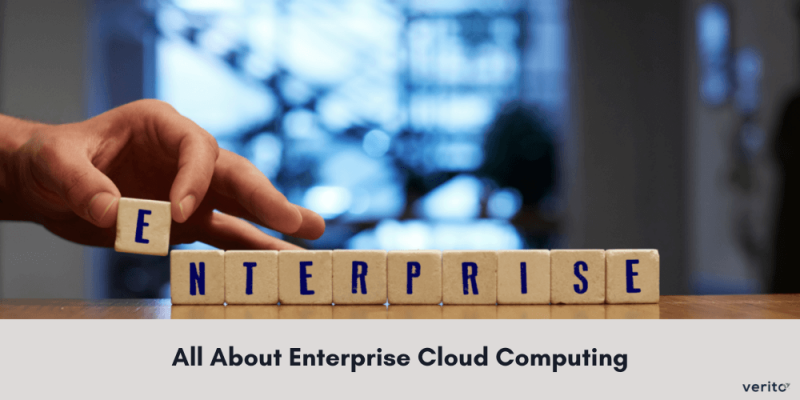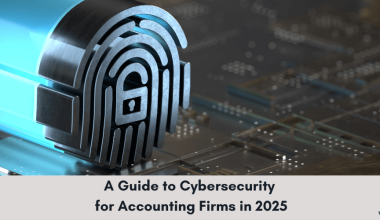From being a buzzword in the last decade to becoming a global market expected to reach $791.48 billion in 2028, cloud computing has grown at a rapid pace. Yet, if you are still evaluating whether or not to embrace migration to the cloud, you are behind 90% of companies, said 451 research.
Organizations need scalable and flexible access to computing resources as they undergo a technological transformation. In the past, enterprises had to bear the cost of setting up and maintaining their IT setup and servers. But with the easy availability of enterprise cloud computing at a low cost, you can partner with a cloud service provider for dedicated servers or managed IT services.
However, you may want to know what enterprise cloud computing is before switching from a traditional on-premise setup. Remember that this blog post is dedicated to helping you understand the related fundamentals.
What is Enterprise Cloud?
Enterprise cloud refers to the cloud computing model with which businesses can access virtual IT resources via a cloud service provider. These include dedicated servers, processing power (vRAM), storage, and networking infrastructure. It allows enterprises to enhance their scalability, security, and resiliency while reducing related IT costs. Renowned private enterprise cloud service providers offer these virtual resources on a pay-per-use basis and managed services.
Besides this, an enterprise cloud also provides a single point of control to manage infrastructure and cloud-hosted applications.
Also Read:
- Cloud Hosting: Definition, Advantages, and More
- Misconception Regarding QuickBooks Enterprise Solutions And Point Of Sale
- Recipe For Success: QuickBooks Enterprise For Legal Firms
Why are Enterprises Moving to the Cloud?
Enterprise cloud technology has witnessed widespread adoption because of the following factors:
-
Reduction in operating costs
An enterprise cloud solution is typically available under a pay-as-you-go pricing model, meaning businesses only pay for the cloud resources they use. Switching to the cloud also helps them avoid significant upfront costs required to develop similar in-house infrastructure. For example, there’s no need to buy servers or lease a data center, reducing IT expenses.
-
Top-notch security benefits
Enterprises are often targeted by cybercriminals to steal or expose business-specific data. If and when they occur, data breaches result in reputational and financial damage. This is where the enterprise cloud outweighs the traditional IT environment by providing access to advanced security measures and cloud security monitoring control.
-
In-built disaster recovery mechanism
Having a solid disaster recovery plan is critical to maintaining business resiliency in the face of a disaster that leads to a service outage. On the worst corner, some possible outcomes are loss of revenue, customer trust, and financial damages. But the best part is – you can overcome all these possibilities with an enterprise cloud suitable for your business.
-
Better collaboration between teams
With cloud solutions, you can also benefit from enhanced communication between the team and real-time collaboration. In addition, your workforce can work from any location and access cloud-hosted data, which is essential for dynamic business needs.
Different Types of Enterprise Cloud Architecture
There are four standard models for enterprise cloud deployment, each of which has benefits and use cases.
-
Private cloud
A private cloud is one in which all the cloud resources are used by one enterprise. In other words, the cloud solution is not publicly available. Instead, only authorized users can access the configured cloud server from anywhere. Because of compliance and security requirements, many enterprises develop in-house private clouds, while others partner with cloud hosting providers for such needs.
-
Public cloud
Public cloud services are provided by third-party cloud providers and are available to different users/clients. These cloud providers have invested in large data centers with a sizable pool of virtualized cloud resources. As a result, multiple enterprises can use this cloud simultaneously under their individual subscription plans.
-
Hybrid cloud
It combines both public and private cloud use by various enterprises. Here, the public cloud component provides a low-cost infrastructure for easy-to-scale operations, while the private cloud can be used to secure sensitive organizational data.
-
Multi-cloud
This is yet another cloud architecture that combines services from more than one cloud solution provider. For each workload deployed on the cloud, you can select from the chosen cloud service providers in terms of cost, features, performance, and security.
Wrapping up
Like any other technology, the enterprise cloud comes with several advantages. If you want to accelerate the operations, there’ll be no better time than now to switch to cloud computing. To discuss your enterprise needs with our cloud experts, contact us here.







